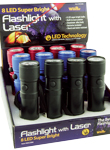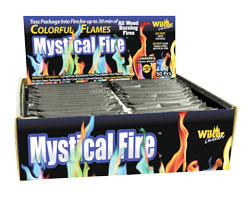By IvyLee Rosario
 Expanding your retail merchandise always comes with the same set of questions: what do I want to sell next and how do I begin selling those items? In order to assist our readers in reaching their highest selling potential, Independent Retailer created a monthly series called “Beyond Your Lines.” Here we provide you with the best tips from experts in their selling categories on how to grow your business, what to expect from the merchandiser and what they will require from you, to ensure an effective and efficient exchange. Continuing our segment will be Dennis Corrigan, Marketing Manager of Wilcor International, who will shed some light on what it takes to begin selling our next category item: camping and outdoor products.
Expanding your retail merchandise always comes with the same set of questions: what do I want to sell next and how do I begin selling those items? In order to assist our readers in reaching their highest selling potential, Independent Retailer created a monthly series called “Beyond Your Lines.” Here we provide you with the best tips from experts in their selling categories on how to grow your business, what to expect from the merchandiser and what they will require from you, to ensure an effective and efficient exchange. Continuing our segment will be Dennis Corrigan, Marketing Manager of Wilcor International, who will shed some light on what it takes to begin selling our next category item: camping and outdoor products.
Getting Started:
The topic of camping and outdoor merchandise may seem broad with the array of items to choose from such as tents, campfire starters and barbecue supplies, all the way to snorkels, water shoes and fishing rods, but this way it will give you a chance to really think about what kinds of products should be sold at your specific store. So, with the help of our expert, the must know information on selling camping and outdoor items will be right at your fingertips. There are several ways of going about purchasing new stock, but take into account these tips while growing your store.
The first thing any retailer should do when looking to start a new product line is researching their area for what products potential customers may be looking for. “Investigate what the people are doing around you,” said Corrigan. “Is your store near a lake? Are people hiking, camping, or going to the mountains? Is there a river where people spend the most time? Find out what the reasons are for coming to your area, and then you can choose a product line from that information.” Instead of choosing a few different items to start selling in your store, Corrigan suggests going with a category. A survey of your occupying region will lead to a category and that will lead you to the items you should be selling in your store. For example, if the store is located in a heavy camping area, then be sure to carry a variety of product in which all camping needs will be met. Customers should be able to find everything from tents and lanterns to blankets and matches. “Over 90% of what is sold in a store are impulse buys based on display and variety,” said Corrigan. “The most important thing to do is have a well rounded category carrying enough product to show that these customers can come back here for whatever items they need for their trip. If you choose to sell a few different items from separate categories, then those customers are going to leave and go to a store in which they can buy everything at one time.”
Retailers also need to make sure they are choosing a supplier with experience, one that is motivated in helping their clients with new product and neat displays. “Retailers need to look for a company that stands behind their product line,” said Corrigan. “Look at similar stores in different areas than yours and see why people go there. See what products they are carrying and do not be afraid to ask them questions.”
Mistakes to Avoid:
 There will always be common mistakes and misconceptions retailers have when upsizing their merchandise. Here are a few to avoid and ways to correct them.
There will always be common mistakes and misconceptions retailers have when upsizing their merchandise. Here are a few to avoid and ways to correct them.
Remember that products do not sell themselves. It is up to the storeowner and their staff to properly execute their displays in order to make a sale. “There could be five stores all selling the same type of product in the same area, but I guarantee the one that is making the most sales is the store that is the most attentive to what the customer needs and wants and whose displays are always full, neat and constantly are being updated,” said Corrigan. Another common mistake made by retailers is not taking proper inventory. Do not rely on memory to know what is in the back of your store. Instead, take the time to physically keep track of the product so you do not wind up with cases in the back not being sold. This will ensure that all product orders are done correctly.
Keep in Mind:
Now that we have provided the tools and expertise on the camping and outdoor equipment industry, it is up to you, the retailer, to go out and decide if this is the right merchandising step for you. Remember these tips when on your journey to retail growth.
• Research, research, research: Before starting any new product line, make sure you do your homework on the products that are selling in your region, ask questions to your prospective suppliers and talk to other salespeople about best selling merchandise.
• Always change up your displays: The difference between making sales and being left with non-selling merchandise is how you display it. Make sure to keep your store looking fresh and updated by switching around product.
• Be diligent and assertive: Do not wait to be told by your supplier what might sell in your store, go out to similar retailers around you and figure out what products customers in your area are looking for. Also be sure to listen to your current customers for what they want in the future.
• Do not rely on other items to fill your inventory: If a certain product sells out in the store, do not take that as an opportunity to try and sell something completely different in its place. That item is sold out for a reason; it is what the customer wants! So reorder the merchandise immediately.
